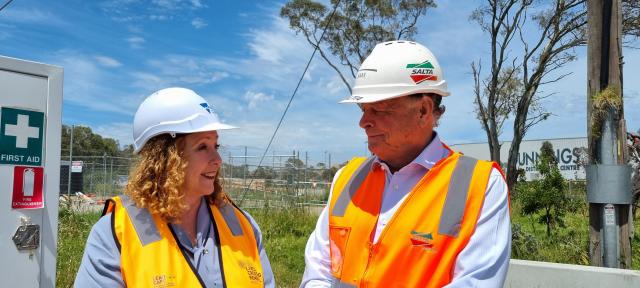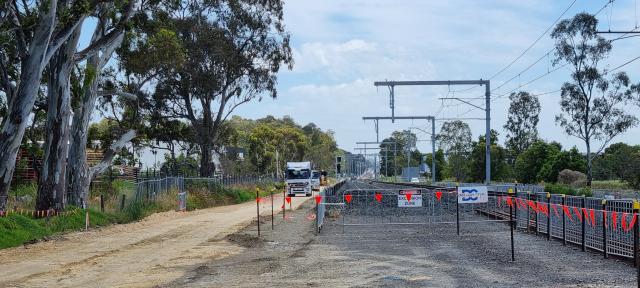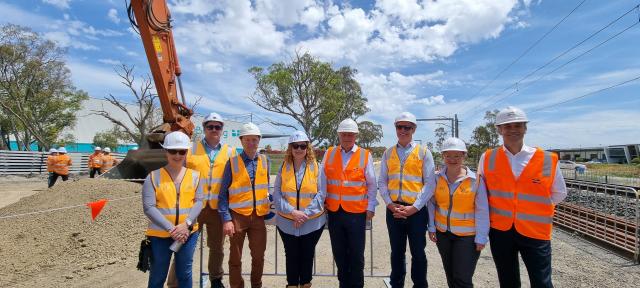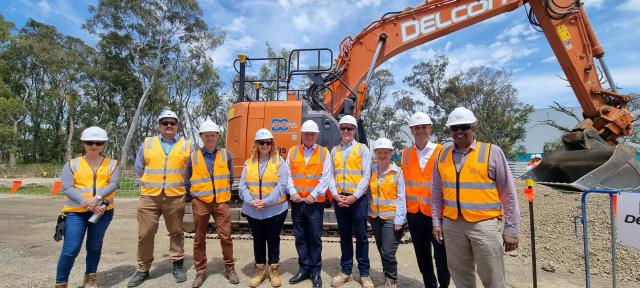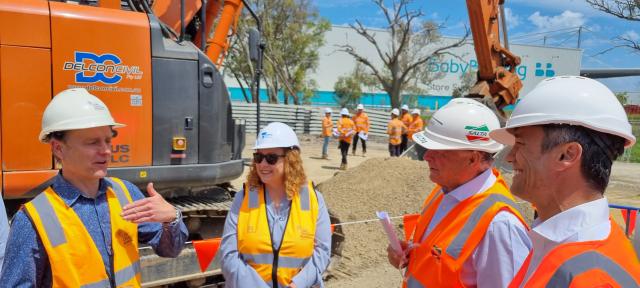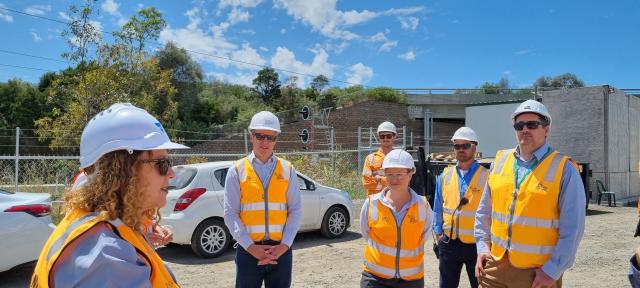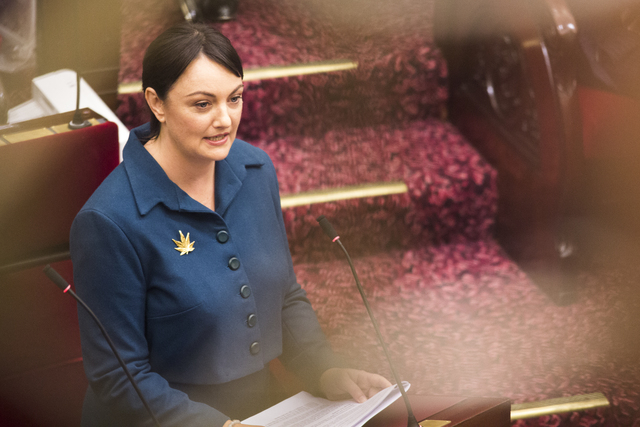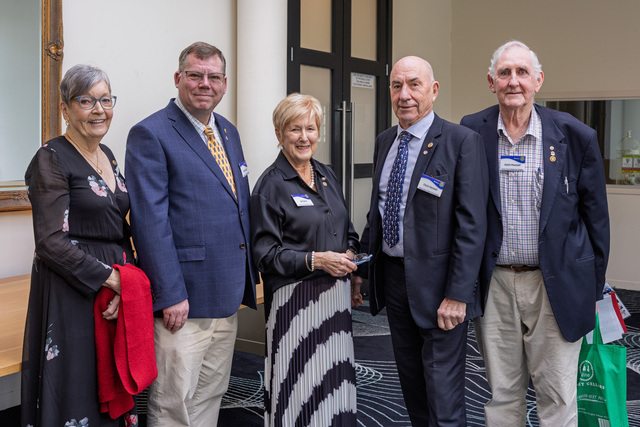Seventeen years in the making, a rail link to a $150 million inland freight terminal in Dandenong South is becoming reality.
Works have started on a $28 million, 862-metre spur rail track branching off the Cranbourne line as part of the Victorian Port Rail Shuttle Network.
It is a key link in delivering up to 840 cargo containers a day between the Port of Melbourne and Salta Properties’ massive freight terminal under construction off Bayliss Road.
This will remove more than 300 truck trips off Monash Freeway and congested local roads each day – or 175,000 trips a year.
Salta will build two 650-metre rail tracks to connect the spur line to its 500,000-square metre terminal and warehousing area.
The terminal will be capable of handling 560,000 containers annually.
Managing and founding director Sam Tarascio has pushed the vision for 17 years, presenting it as an answer to increasing road freight and congestion.
“We had a logistics company at the time. That’s why we understood it was what the state needed.
“It’s a big project with big benefits in this area. It will make everything more cost-effective.”.
It would be a “major god-send” for a precinct filling with importers, exporters and major distribution centres such as Amazon, Bunnings and Woolworths.
The rail option would be 20 per cent cheaper than by road, he said.
Salta recently announced a $50 million upgrade to make its $150 million terminal fully automated.
Technology would ensure “optimum efficiency around container tracking, leading to fast turnaround times”, Mr Tarascio said.
Trucks and trains’ cargo will be photographed with high-definition cameras, so to allow them to enter and leave the terminal without stopping.
“Salta is planning for five (return) train trips per day to service stevedores at the Port of Melbourne, and each leg will transport up to 84 import/export containers.”
He paid tribute to the support of Greater Dandenong Council – who “couldn’t have been more cooperative” – and Dandenong MP Gabrielle Williams – a “star performer”.
Salta estimates its 185-hectare Nexus Industrial Estate to be worth more than $1 billion over the next three to five years.
Freight and Ports Minister Melissa Horne, who inspected the rail track site on 14 December, said the project was “critical to drive prosperity in the South East”.
“Salta’s vision, partnering with the state government, to deliver this project will transform the South East.
“It will get thousands of trucks off roads, cement the future of this area as a freight logistics hub and create hundreds of local jobs.”
The spur line, jointly funded by the state and federal governments, is expected to be built by the end of 2023. The Salta rail freight hub is expected to be up and running in 2024.
Its construction is at the same time as the parallel duplication works on the Cranbourne rail line, which will increase metro passenger train frequencies to every 10 minutes.
Deputy Prime Minister and Infrastructure, Transport and Regional Development Minister Barnaby Joyce said the project would capitalise on the existing rail network, support industry and create South East jobs.
“Once complete, the new spur line will build on the strengths of this region as a freight and logistics hub.”
Dandenong MP Gabrielle Williams said the “highly anticipated upgrade” would generate jobs for workers and suppliers.
“(This is) in addition to hundreds of workers already employed on projects such as major upgrades to the Monash Freeway and Cranbourne line.”
Recently, the State Government announced a $125 million Port Rail Transformation Project, including a new rail terminal at Port of Melbourne to connect with Dandenong South by 2023.
By 2050, the Port Rail Shuttle Network is predicted to move 30 per cent of Melbourne containers by rail to terminals in Dandenong South, Altona and Somerton.
The Federal Government invested $18.3 million and the Victorian Government $9.7 million in the spur line project.

